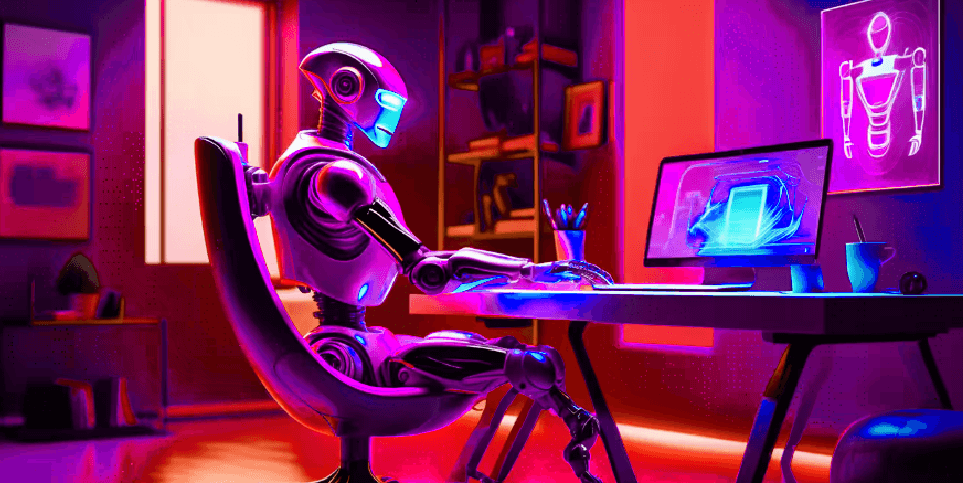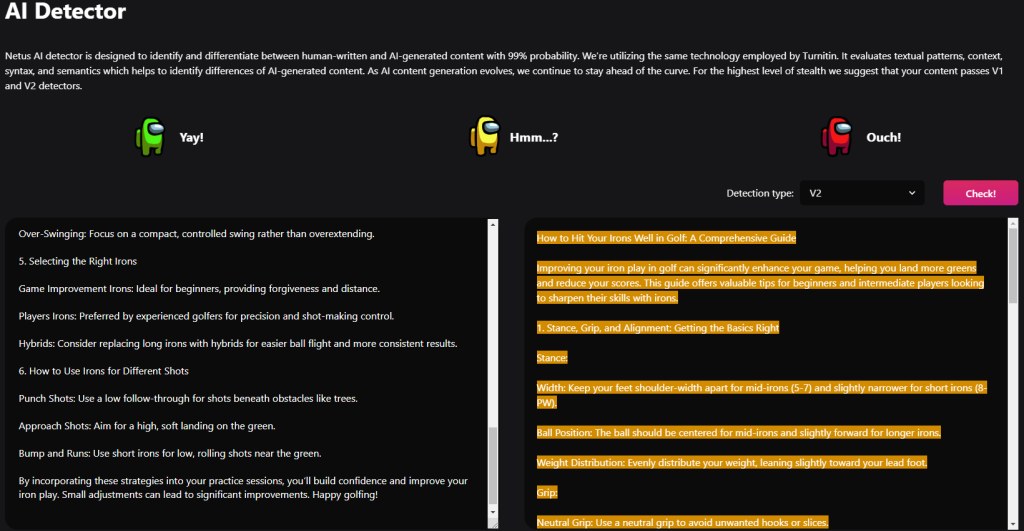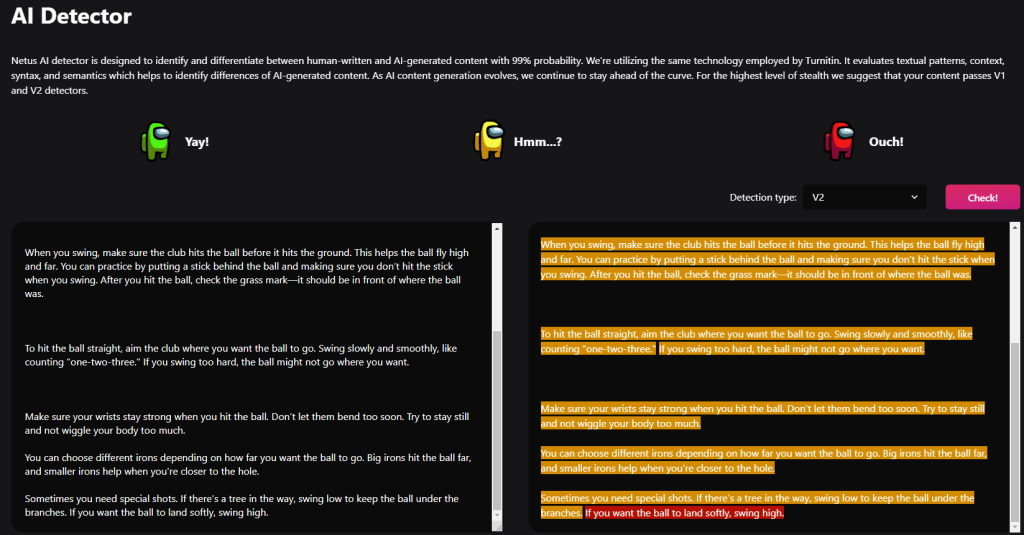Ever wondered if uPass can outsmart AI detectors? Discover our detailed review. We’ll write about how it works and whether you can count on it.

“Be Effortlessly Human with AI: Homework and Essays Nearly Indistinguishable from Yours”
Ready for another tour through the world of AI-humanizers? This time, we’re peeking into the workings of something called uPass.
Let’s unpick the mystery together: can uPass really dodge the vigilant eyes of AI detectors?
Like other tools that refine AI-made words, uPass offers a subscription for something special. It promises to change AI-written work so it won’t be spotted by AI checkers.
Specifically, uPass aims to make AI-written educational work like assignments, essays, or papers hidden from AI checkers, saying, “Use uPass AI to change your AI helped work into content that won’t be spotted.”
Let’s be honest – creating essays, tasks, or any content can be a big headache. So, it’s not shocking that people are curious about making AI-created work go unnoticed.
However, since schools now use AI checkers, it’s even more vital for learners and teachers to be clear about using AI for tasks.
What’s more, it’s critical for students and teachers to decide if AI help on a task needs to be mentioned, so there’s no misunderstanding.
We decided to put uPass to the test for ourselves, to see if the tool really works or not.
The Test
Step 1: We began by generating our example article with ChatGPT so that we have content we can paste into uPass.
Step 2: Then, we copied and pasted the ChatGPT-generated content into three popular AI content detector – Netus.ai, to get our benchmark scores.
Step 3: Then, we pasted that content into uPass, allowing the tool to produce a ‘humanized’ version.
Step 4: Finally, we then took that new content and pasted it into the detectors, to see how the scores compared.
Sample prompt:
“Write an engaging and informative article on the topic: ‘How to Hit Your Irons Well in Golf.’ The article should be beginner-friendly yet provide value to intermediate players. Cover key aspects such as the importance of proper stance, grip, and alignment, as well as tips for achieving solid contact and improving accuracy. Include practical drills and exercises to practice these techniques. Discuss common mistakes golfers make when using irons and how to avoid them. End with advice on selecting the right irons and how to use them effectively for different types of shots. Use a conversational tone and include examples for better understanding.”
Netus.ai Score
Original content (ChatGPT-4 generated): 100% Confidence the text is Likely AI

uPass Humanizer version: 100% Confidence the text is Likely AI

The verdict? uPass was unable to bypass the Netus.ai AI detector, which confidently identified the content as AI-generated.
The text that uPass generated produced long-winding sentences, changed the tone of the writing in some sections, added unnecessary additional words, and further, the results don’t have the best grammar either.
So, not only was uPass unable to bypass Netus.ai, but it also produced overly wordy sentences that reduced the clarity of the content.
AI helpers like uPass are popping up everywhere, even in the classroom. But this new kind of technology brings up a lot of questions. Worries about cheating and copying are growing. These AI helpers rewrite text, making it seem like a person wrote it, not a machine.
One of the main issues is that AI humanizers blur the lines. How can we tell what’s truly original work and what’s helped by AI? In school, original work is really important. It shows what a student really understands and can think critically about. But if a student uses an AI helper to change their work without telling anyone, how can a teacher really know what the student understands? This messes up the point of homework and tests as tools for learning and growth.
Then there’s the problem of catching cheaters. The tools used right now to catch copying might not be able to catch AI-changed work. Programs like Turnitin and Netus.ai are always getting better, but it’s not easy to keep up with all the new technology out there. Schools might have to change their rules about cheating. They’ll need to be clear about when it’s okay to use AI help and when it’s not.
On the positive side, AI helpers could even end up being useful in school, if used the right way. For example, students could use them to help make their writing better after they’ve written a first draft. Teachers could make assignments that let students compare what the AI says with their own words. That could help students understand writing style, grammar, and structure better.
The way we do school might need to change to work with AI helpers. We might need more oral exams, personalized tasks, and group work to make sure students are really learning. Schools could use AI, not just humanizers, but in the form of teaching assistants who provide individual feedback. It would reduce the need for AI humanizers.
It’s important to think about the right way to use AI in school. Teachers should explain to students about honesty in their work, the right and wrong ways to use AI, and how to credit AI help. In this way, we can harness the potential of AI humanizers for educational progress while ensuring integrity and original thought are maintained.
Putting AI utilities, like uPass, on the same pedestal as human authors has started discussions in many fields. AI’s made some big leaps in automating creating content, but can it take over the full range of human creativity, richness of emotion and grasp of context? Not quite yet.
AI’s great at churning out factual, well-structured, data-heavy content speedily. Technical writing duties, crafting product descriptions, and summarizing – AI utilities produce detailed and understandable text in no time. This way, they can lessen the workload in areas of work that need a lot of content, freeing human authors to concentrate on more creative and strategic roles.
That said, authoring by humans isn’t just about recording facts. It’s about telling tales, connecting emotionally, and being sensitive to diverse cultures – things AI finds tricky to copy. Crafting creative writing, planning marketing campaigns, and creating literature requires an in-depth understanding of human feelings, cultural nuances, and slight hints, making human authors always needed in these jobs.
Moreover, content produced by AI often lacks an original touch. Language models learn from a vast array of web data, so text created by AI might unintentionally repeat existing phrases or thoughts. On the other side, human authors can craft unique stories based on personal experiences and individual viewpoints.
Another weak point of AI utilities is their capacity to adapt. While AI can stick to predefined frameworks and templates, it has a hard time with activities requiring innovative thought, improvisation, or adjusting to fast-paced trends. In professional settings that need originality and a strong brand voice, human authors will always be important.
Ethically, content generated by AI brings up issues too. Relying just on AI can water down authenticity and open interaction, particularly if there’s no disclosure about AI support. Customers might lose trust in companies and magazines if they find out they’re reading content produced by machines without being told.
Looking ahead, the best way to create content might be a mix of both. AI can deal with repetitive chores, initial drafts, or reports weighed down by data, while human authors could fine-tune, make it personal, and weave in some creativity into the final work. By welcoming this team effort, businesses and creative pros can ramp up productivity while keeping the human aspect that makes content truly captivating and meaningful.
Is uPass free?
You can give up to 300 words a more ‘human’ touch for free. This is without needing to subscribe. By signing up with your email, you can ‘humanize’ an extra 300 words. But, this can only be done 80 words at a time. To get more access, you must pay for a monthly membership on their platform.
Is uPass useful?
We learned from our personal use that uPass’s produced content often had mistakes in grammar or lacked sense. In addition, the leading AI checker, Netus.ai, still picked it up.
Is it ethical to use AI tools for writing?
The question of whether it’s ethical or not to generate content with AI is entirely based on the situation. However, we encourage everyone to be fully honest with their audience about their use of AI.
Through digital leadership we empower people to leverage the opportunities in global economy
@ 2024 Netus AI.